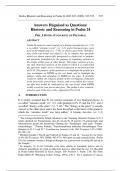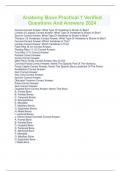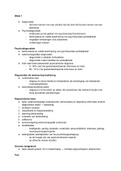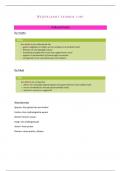Botha: Rhetoric and Reasoning in Psalm 24 OTE 22/3 (2009), 535-553 535
Answers Disguised as Questions:
Rhetoric and Reasoning in Psalm 24
PHIL J. BOTHA (UNIVERSITY OF PRETORIA)
ABSTRACT
Psalm 24 seems to consist mainly of a hymnic introduction (vv. 1-2),
a so-called “entrance torah” (vv. 3-5), and a liturgical piece once
used at the temple gates (vv. 7-10), to which a post-exilic identifica-
tion of the true Israel was added (v. 6). It contains four questions
which are almost universally interpreted as dialectical or antipho-
nal questions formulated for the purpose of regulating entrance to
the temple within some or other liturgy. This paper consists of a po-
etic and rhetorical analysis of the psalm in which it is argued that
the questions rather serve a rhetorical function in the present form
of Ps 24. The purpose of the questions is to highlight the profile of a
true worshipper of YHWH on the one hand, and to highlight the
military might and splendour of YHWH on the other. It probably
sought to outline the religious profile of the worshipping community
in the post-exilic period more clearly, and to reconfirm the consen-
sus that they would be vindicated as the true Israel when YHWH
would reveal his true power and glory. The psalm is also contextu-
alised as part of the post-exilic composition Pss 15-24.
A INTRODUCTION
It is widely accepted that Ps 24 contains remnants of two liturgical pieces: A
so-called “entrance torah” (vv. 3-5, with parallels in Ps 15 and Isa 33),1 and a
so-called “liturgy at the gates” (vv. 7-10).2 The “liturgy at the gates” is usually
viewed as the older piece and it has been described as the basis of the psalm to
which the “entrance torah” was later added.3 A hymnic introitus (vv. 1-2)
1
“Die formgeschichtliche Schule erkannte in der Nennung ethischer Normen in V.4
relativ deutlich ein Formelement, dass Ps 24 mit Ps 15 und Jes 33 gemein hatte und
rekonstruierte daraus die literarische Gattung der ‘Toraliturgie’ oder auch ‘Tempel-
einlassliturgie.’” Thomas Podella, “Transformationen kultischer Darstellungen. Tora-
liturgien in Ps 15 und 24.” Scandinavian Journal of the Old Testament 13/1 (1999):
95-130, 112.
2
Michael Goulder (“David and Yahweh in Psalms 23 and 24.” Journal for the Study
of the Old Testament 30/3 [2006]: 463-473), 469 quite recently remarked that “Psalm
24 is by common consent a liturgical dialogue for a procession escorting the ark up to
the Temple.”
3
Its imagery, its 3+3+3 tristichic verse lines similar to Canaanite poetry, and its
climactic parallelism are cited as indicators that it is older than the rest. Cf. Hossfeld
in Frank-Lothar Hossfeld & Erich Zenger, Die Psalmen I. Psalm 1-50. Die Neue
Echter Bibel 29. Würzburg: Echter Verlag, 1993a, 156-7. For a summary of various
,536 Botha: Rhetoric and Reasoning in Psalm 24 OTE 22/3 (2009), 535-553
seems to have been inserted at the beginning, while verse 6 is seen as a later
(post-exilic) editorial appropriation of the blessing pronounced in verse 5.4
According to this broad consensus, the psalm thus reflects two originally
independent dialogical situations, although many researchers have also sought
to connect the two as belonging together within the same Sitz im Leben:5 in the
“entrance torah,” a priest asks questions about the requirements for a visit to
the temple and these are answered by the prospective worshipper or pilgrim be-
fore being admitted or blessed;6 in the “liturgy at the gates,” the members of a
procession, carrying the ark of the covenant or some other representation of
YHWH seek entry to the city or the temple, and have to answer the probing
questions of priests or guards to secure entrance for YHWH, the “glorious
views about the Gattung and date of Ps 24, cf. Oswald Loretz, Ugarit-Texte und
Thronsbeteigungspsalmen. Die Metamorphose des Regenspenders Baal-Jahwe (Ps 24,
7-10; 29; 47; 93; 95-100 sowie Ps 77,17-20; 114). Erweiterte Neuaflage von “Psalm
29. Kanaanäische El- und Baaltraditionen in jüdischer Sicht” (UBL 2.1984], Münster:
Ugarit-Verlag. [UBL 7], 1988), 267-269. Loretz himself sees in Ps 24:7-10 a remnant
of a liturgy used at a feast celebrating YHWH’s ascension to his throne. Some have
thought of the inauguration of the temple as the occasion for which it was composed
(for a list, cf. Alan Cooper, “Ps 24:7-10: Mythology and Exegesis.” Journal of Bibli-
cal Literature 102/1 (1983): 38), but Hossfeld (Hossfeld & Zenger, Die Psalmen I,
157) explicitly denies any connection to the bringing of the ark to Jerusalem or the
dedication of the temple, or even a procession with the ark of the covenant.
4
It was probably inserted by the post-exilic editors who regarded themselves as the
“poor” or “humble” people, the so-called “messianische Armenfrömmigkeit” (Hoss-
feld & Zenger, Die Psalmen I, 157). The same editors also had a hand in the insertion
of Ps 22:24-27, establishing a number of connections between these verses and Ps
24:6 (e.g. “Jacob,” “those who seek him”). Cf. Frank-Lothar Hossfeld & Erich Zen-
ger, “Wer darf hinaufziehn zum Berg JHWH’s?” Zur Redaktionsgeschichte und Theo-
logie der Psalmengruppe 15-24,” in Biblische Theologie und gesellschaftlicher Wan-
del. Für Norbert Lohfink. (Ed. Georg Braulik, Walter Gross and Sean McEvenue.
Freiburg am B.: Herder, 1993b), 180.
5
All its parts originated in the same cultic situation according to Sigmund Mo-
winckel, The Psalms in Israel’s worship. Two volumes in one. Translated by D. R.
Ap-Thomas. (Sheffield: JSOT, 1992), 6, Artur Weiser, Die Psalmen übersetzt und
erklärt. 4. neubearbeitete Auflage. (Göttingen: Vandenhoeck, 1955), 156, Evode
Beaucamp, Le Psautier. Ps 1-72. Sources Bibliques. (Paris : Librairie Lecoffre, 1976),
200 and Hans-Joachim Kraus, Psalms 1-59. A Commentary. Translated by Hilton C.
Oswald (Minneapolis: Augsburg, 1988) 312), among others. Michael Goulder,
“David and Yahweh in Psalms 23 and 24.” Journal for the Study of the Old Testament
30/3 (2006): 463-473, sought to read both Pss 23 and 24 as liturgical texts commemo-
rating David’s capture of Jebus and the translocation of the Ark of the Covenant to
Jerusalem.
6
Some interpreters conversely understand the questions as being asked by the
prospective worshipper, upon which the priest then reacts with a “torah” and pro-
nounces a blessing on those who qualify.
, Botha: Rhetoric and Reasoning in Psalm 24 OTE 22/3 (2009), 535-553 537
king.”7 Almost all exegetes identify a liturgical, dialogical or antiphonal struc-
ture in the psalm.8
In this paper, I would like to argue that, in its present setting, the four ques-
tions in the psalm should be seen as rhetorical devices rather than real questions
with a regulatory function. As part of the Psalter, Ps 24 is foremost to be read as a
literary text which forms part of a prayer book. The dialogical situation is that of
worshippers speaking to YHWH, but the psalm also serves a didactic purpose as a
communication between worshippers, with the poet striving to educate or exhort
fellow believers. Poetic tropes consequently serve to strengthen its argumentative
impact in this regard. Similar to the function of rhetorical questions, the questions in
Ps 24 (in its present form) serve as emphatic statements. This thesis will be investi-
gated and argued on the basis of a poetic and rhetorical analysis of the psalm, with
additional arguments being drawn from a comparison with other similar texts in the
Hebrew Bible. The meaning of Ps 24 as part of the first Davidic Psalter will finally
be explored cursorily.
B THE TEXT AND A TRANSLATION OF PS 24
1 Of David. A psalm.
I A 1 YHWH’s is the earth and its fullness,
!" #$% the world and all who dwell in it;
2 & ' ( *) + ,* - 2 for he has founded it upon the seas,
7
The historical or commemorative event would have taken place under David, Solo-
mon, Zerubbabel, the Maccabees, or after some unspecified battle. It has also been
linked to an enthronement festival, a New Year festival, a festival of epiphany, a dedi-
cation festival, an equinox celebration, or another unnamed ritual procession. For a
range of opinions, cf. Cooper, “Ps 24:7-10,” 38-39. Cooper himself rejects any idea of
a procession with the ark, but sees in vv. 7-10 a “fragment or remnant of a descent
myth” in which the gatekeepers of the netherworld are summoned to open the gates,
“with an apostrophe to the gates themselves” (43). Hermann Spieckermann,
Heilsgegenwart: eine Theologie der Psalmen. Forschungen zur Religion und Literatur
des Alten und Neuen Testaments 148. (Göttingen: Vandenhoeck, 1989), 204 consid-
ers Ps 24:7-10 to be a remnant of an original liturgy, to which a poet added his own
purposefully made composition in two sections (vv. 1f* and 3-5*).
8
Wilson (Gerald H. Wilson, Psalms Volume 1, The NIV Application Commentary,
from Biblical Text … to Contemporary Life, Grand Rapids: Zondervan, 2002), 447
says the “liturgical character of the psalm appears clearly in its antiphonal question-
and-answer structure.” One of the modern exegetes who is sceptical about the use of
Ps 24 in a liturgy, is Dieter Schneider, Das Buch der Psalmen. 1. Teil, Psalm 1 bis 50.
(Wuppertal: Brockhaus Verlag, 1995). He asks whether it is possible to question the
clear pronouncement on YHWH’s royal power liturgically or dramatically and by
doing so imply that his claim to kingship is not accepted. According to him (Schnei-
der, Das Buch der Psalmen, 175), in a careful reading of the text, the supposed rituals
all make the impression of being a construction.







